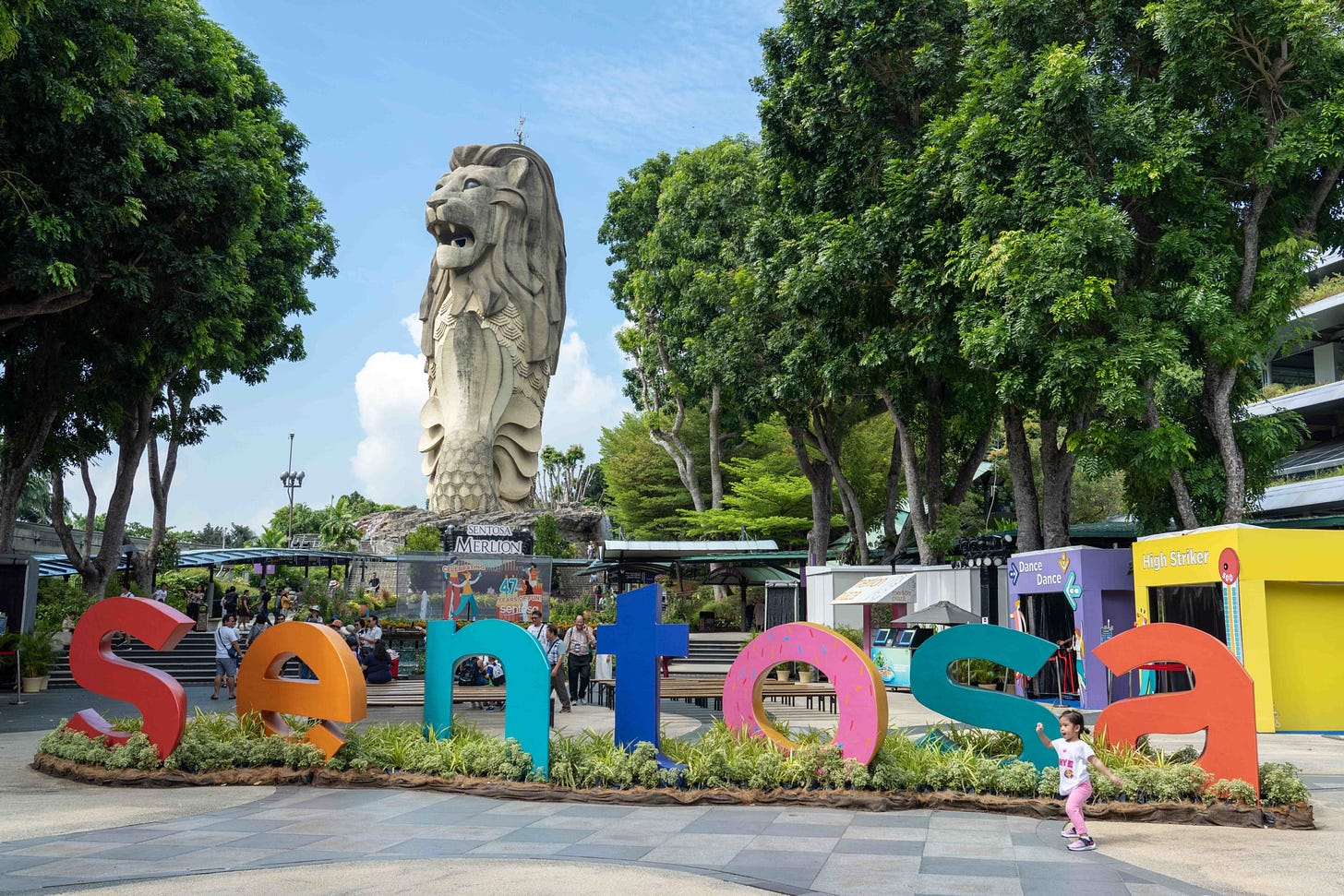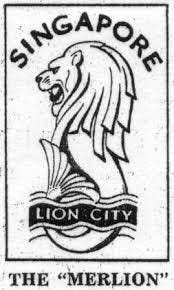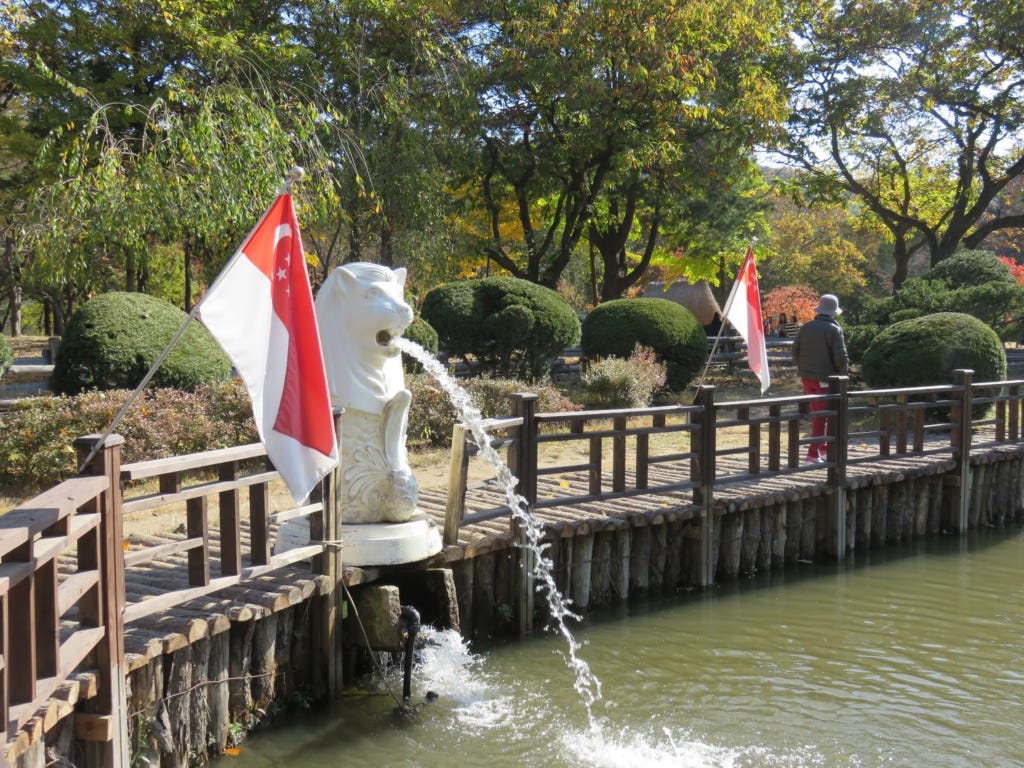How many Merlions have you found?
The Merlion has a complex relationship with Singapore identity - on one hand, it is iconic, and on the other, it reminds us of the artificiality of most of our symbols. We explore this tension today.

What is Singapore without the Merlion? That is probably a good philosophical prompt around the importance of symbols, whether constructed or evolved. When we had scheduled this episode, we did not know that we were actually walking into a much more complex conversation on the way Singapore sees itself. Frankly, Elliot and I thought we would just be recording a short episode on where to find the Merlions in Singapore but, of course, with every SGExplained deep dive, we are bound to find out more than we thought we knew. In this newsletter, we look at the various ways the Merlion has been portrayed in the world as well as explore the controversy around the symbol.
Have you checked out our podcast yet?
How did the original Merlion come to find its way in Merlion Park at Marina Bay? It was actually the result of a heavily involved operation involving some big barges. Find out more fun facts about the Merlion, and follow Elliot and me as we track the various Merlions not just in Singapore but around the world as well. Tune in now!
The many faces of the Merlion
So you may be familiar with the Merlion statue that is often in every tourist’s photo collection of Singapore, but did you know that the Merlion has been recreated or reproduced in many ways? Here are some of the iconic ways it has appeared.
The OG Logo
Most people forget that the Merlion was originally the result of a logo commission for the Singapore Tourist Promotion Board (STPB) in the early 1960s. In its conception, there was no illusion of mythology about a half-lion half-fish that swam around Singapore. Instead, it was meant to be a symbolic amalgamation of two key aspects of Singapore’s identity.1
The Merlion has taken its own journey since then, now being shared as part of Singapore’s mythos, which is ironic given that many forget that Sang Nila Utama likely saw a tiger and not even an actual lion. While this can be seen as an affirmation of the STPB’s brand efforts, many continue to be bewildered by the phenomenon of a government agency emblem becoming a cornerstone of Singapore identity.
Merli/Merly
If you can hold the complex history of the Merlion at the back of your mind, you may allow yourself to be thrilled by the cute adaptations of the emblem into anthropomorphic characters such as Singapore’s own Merli. As an extension of the Singapore Tourism Board’s (STB) brand efforts, specifically, to target young children2, Merli joins an ensemble of other recognisable Singapore mascots such as Marina the Otter and Chomp Chomp the Croc in adventures around Singapore’s attractions.

Before Merli, there was Merly. I know it is not extremely original but sometimes these things happen in Singapore’s history. As shared in the podcast, MerLY actually is a combination of “Mer” and the letters L and Y, which stand for liveliness and youthfulness, and she is one of two mascots created for the first-ever Youth Olympic Games (YOG) held in Singapore.3 I actually volunteered during the Singapore YOG and remember that many people loved the mascots. In some ways, the reimagining of old symbols is a great way to connect history with the sentiments of the day.
South Korean Merlion
We talked about a number of the internationally placed Merlions on our podcast but here is one that was kept just for the newsletter. This Merlion is found on Nami Island in South Korea, in an area where flags from around the world surround the water body. What is interesting is that Singapore is privileged to have this additional feature in addition to the flags, probably because its spouting mouth adds to the water features.
There are many more Merlions around the world apparently, including in Indonesia and Japan. One could even make a Singaporean travel challenge to find all the internationally placed Merlion statues.
Here’s a bonus Merlion for you:
Not my Symbol
We referenced a couple of seminal poems in the podcast, on how Singaporeans have engaged the Merlion as a symbol. Many poets have also referenced the meta-joke that it is almost necessary for a Singapore poet to write their own poem about the Merlion, given that it has all the right ingredients for nuanced exploration. Instead of dissecting the arguments, I have presented the poems themselves for you to get a deeper understand of these perspectives.
Ulysses by The Merlion
For Maurice Baker
By Edwin Thumboo4
I have sailed many waters,
Skirted islands of fire,
Contended with Circe
Who loved the squeal of pigs;
Passed Scylla and Charybdis
To seven years with Calypso,
Heaved in battle against the gods.
Beneath it all
I kept faith with Ithaca, travelled,
Travelled and travelled,
Suffering much, enjoying a little;
Met strange people singing
New myths; made myths myself.
But this lion of the sea
Salt-maned, scaly, wondrous of tail,
Touched with power, insistent
On this brief promontory...
Puzzles.
Nothing, nothing in my days
Foreshadowed this
Half-beast, half-fish,
This powerful creature of land and sea.
Peoples settled here,
Brought to this island
The bounty of these seas,
Built towers topless as Ilium's.
They make, they serve,
They buy, they sell.
Despite unequal ways,
Together they mutate,
Explore the edges of harmony,
Search for a centre;
Have changed their gods,
Kept some memory of their race
In prayer, laughter, the way
Their women dress and greet.
They hold the bright, the beautiful,
Good ancestral dreams
Within new visions,
So shining, urgent,
Full of what is now.
Perhaps having dealt in things,
Surfeited on them,
Their spirits yearn again for images,
Adding to the Dragon, Phoenix,
Garuda, Naga those Horses of the Sun,
This lion of the sea,
This image of themselves.
The Merlion to Ulysses
(on the latter’s visit in Edwin Thumboo’s Ulysses By The Merlion)
By Lee Tzu Pheng5
You have made too many detours,
blown by the officious winds of many a poet
intent upon showing you the sights;
hitching a ride upon your reputation.
You have known it all already,
beauty and beast have been your daily fare,
shallows and delays the grounding
of your ill-planned journey.
How long since you proved
productive and loyal, properly at home?
You, wedded to adulterous adventure,
indulging a monstrous taste
for consorting with monsters?
In this harbour now, you limping in,
once again the victim of conspiracy,
what do your exploits avail you?
You think I belong
to that misbegotten crew
that urged your malingering?
I am none of that ilk!
I am the instant brainchild
of a practical people,
for whom the likes of you
spell decadence, instability and dreams.
Newly arrived you have already outstayed
your welcome.
Look how easy it is to sell you
my story? Are you the warrior, or the gull?
You seem amazed? Properly impressed?
So – the important things of our world,
you must admit,
have not changed much at all.
I am the scion of a wealthy race.
I wear the silver armour of my moneyed people.
Before you leave, O feckless wanderer,
remember to respect my creators.
What does this mean for the Singapore identity?
Symbols are powerful tools to unite groups of people. Some symbols are accepted as an essential part of every country’s identity, such as the national flag or the crest. These represent our sovereignty and nationhood. Symbols like the Merlion, however, speak to something less clear. Some see it as a symbol of our heritage and mythology, and contrastingly, others see it as a symbol of artificiality in a hyper-developed Singapore. Many have just taken the creature to be another one of Singapore’s mascots, together with memorable others such as Singa the Lion and Sharity the Elephant. Regardless of your position, it is indisputable that the Merlion is seen as a symbol of Singapore to the numerous tourists that have visited us, and will likely continue to be in the years to come.
What is your take - should the Merlion be a Singapore symbol? Drop your views in the comments!
Sources
Lion with fish tail is Tourist Board's new emblem - The Straits Times, 1964
STB unveils new character Merli to target families with young children - The Straits Times, 2018
Ulysses by the Merlion - Edwin Thumboo
The Merlion to Ulysses - Singapore Memory Project






